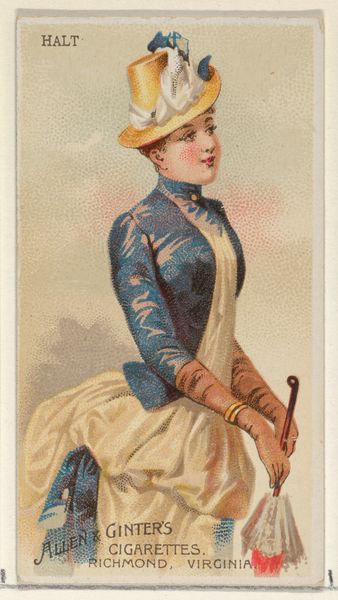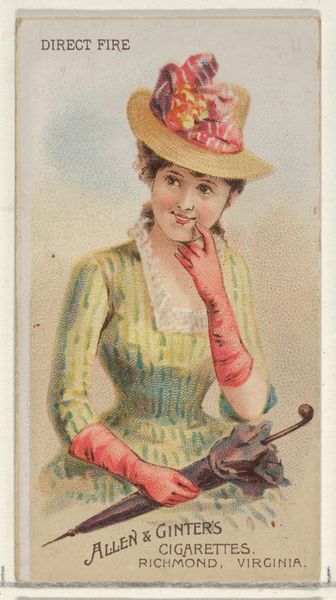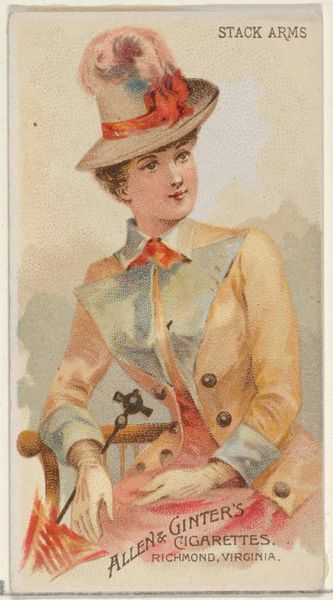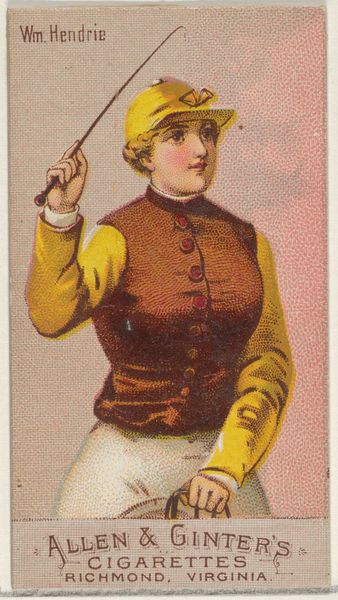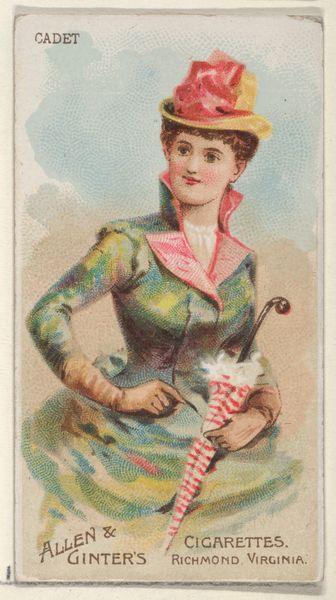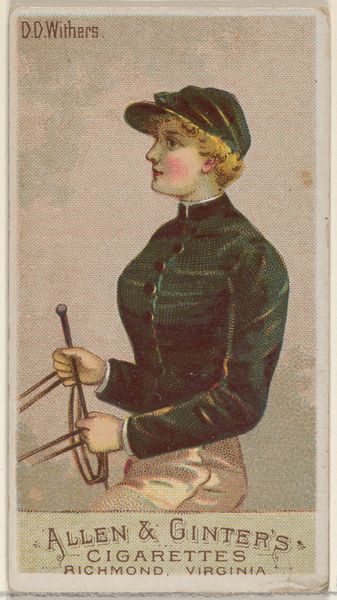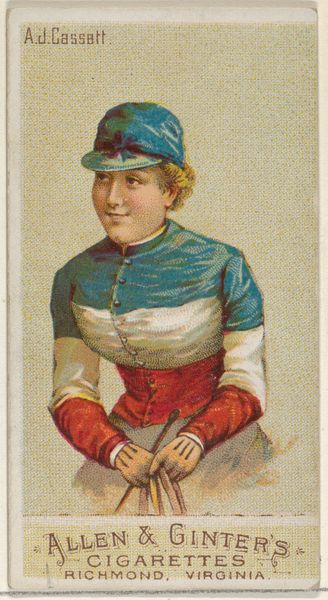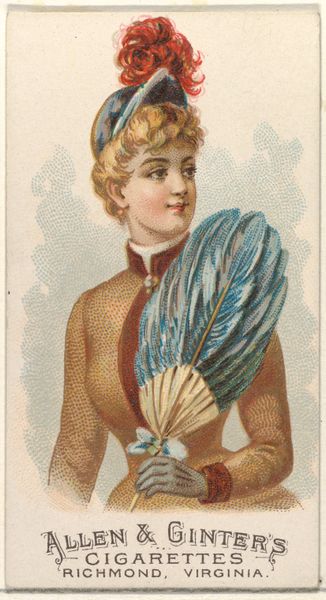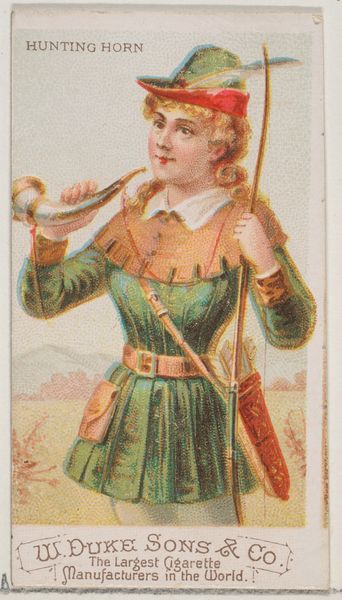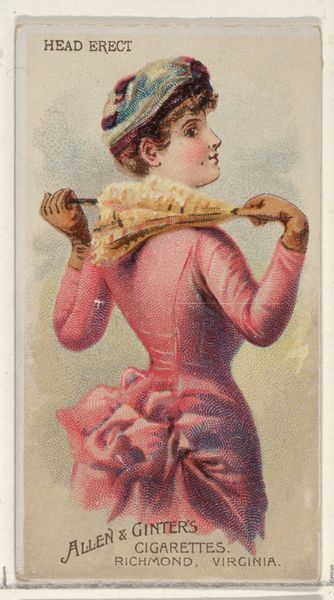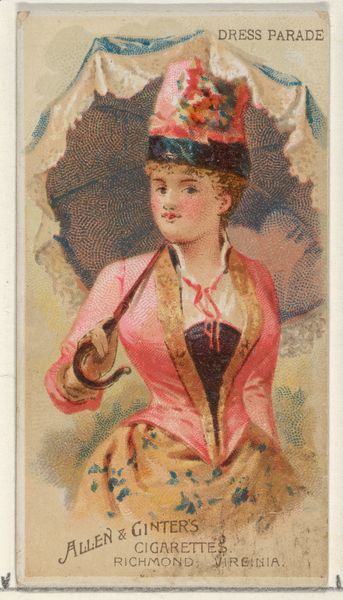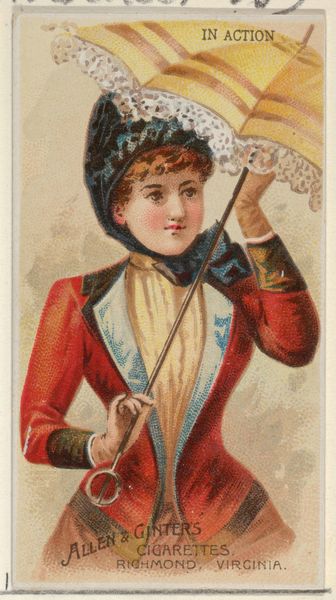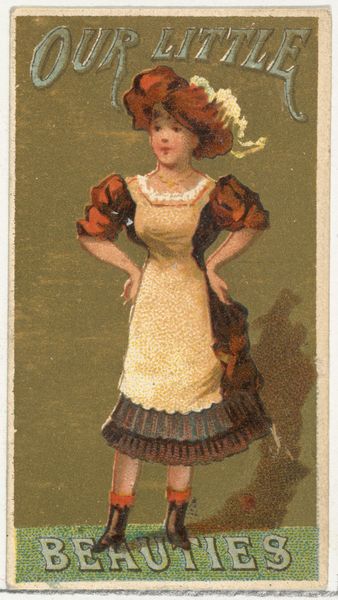
Appleby & Johnson, from the Racing Colors of the World series (N22b) for Allen & Ginter Cigarettes 1888
0:00
0:00
drawing, lithograph, print
#
portrait
#
drawing
#
lithograph
# print
#
caricature
#
personal sketchbook
#
coloured pencil
#
genre-painting
#
athlete
Dimensions: Sheet: 2 3/4 x 1 1/2 in. (7 x 3.8 cm)
Copyright: Public Domain
Curator: I'm immediately struck by the flatness and almost diagrammatic quality of this image. It feels so intentionally constructed. Editor: You’re right; it’s definitely a manufactured image in multiple ways. What we’re looking at is a lithograph produced in 1888 by Allen & Ginter, the tobacco company. It’s titled “Appleby & Johnson, from the Racing Colors of the World series (N22b) for Allen & Ginter Cigarettes." It is currently held at the Metropolitan Museum of Art. Curator: "Racing Colors of the World” series—the commodification of sport is fascinating here, isn’t it? I mean, packaging athleticism with cigarettes, what a perfect storm of industrial-age products. This particular image, the material conditions, really speak volumes. Editor: Absolutely. It reflects a very particular moment in the social and economic landscape, the rise of consumer culture and the use of popular imagery to sell products. The series highlights how social life, including elite sports, became advertising content. Note also that tobacco cards like this were essentially collected by children. Curator: The lithographic process itself seems central. There’s a tension between the mechanical reproduction and the illusion of capturing this equestrian figure. How was the color applied—layered inks, or hand-coloring perhaps? That layering is part of the overall visual experience, influencing texture and depth. Editor: Probably both; color lithography was a developing technology, and these cards represent an interesting case study in mass production. Allen & Ginter, located in Richmond, Virginia, likely had a robust printing operation involving multiple workers to make these cards affordable and ubiquitous. They needed them to be essentially everywhere. Curator: That speaks to the blurred lines of “high” and “low” art here, no? These weren’t necessarily intended as “art” with a capital ‘A’ and the lithographic production makes this plain. However, the skill required to make the drawing on the lithographic stone has inherent value. The print functions within a nexus of commerce, material expertise, and athletic representation. Editor: Right, considering how museums have historically elevated painting and sculpture while marginalizing prints and commercial art. But aren’t images such as this incredibly informative precisely because of how widely they were distributed within the public sphere? Their initial wide reception influenced culture broadly. Curator: I find the piece compelling as a record of working practices and the way products become social signifiers. This print invites us to investigate the industrial context surrounding art. Editor: I concur. This small lithograph offers a window into a particular intersection of business, leisure, and artistic production during a time of huge social change.
Comments
No comments
Be the first to comment and join the conversation on the ultimate creative platform.
